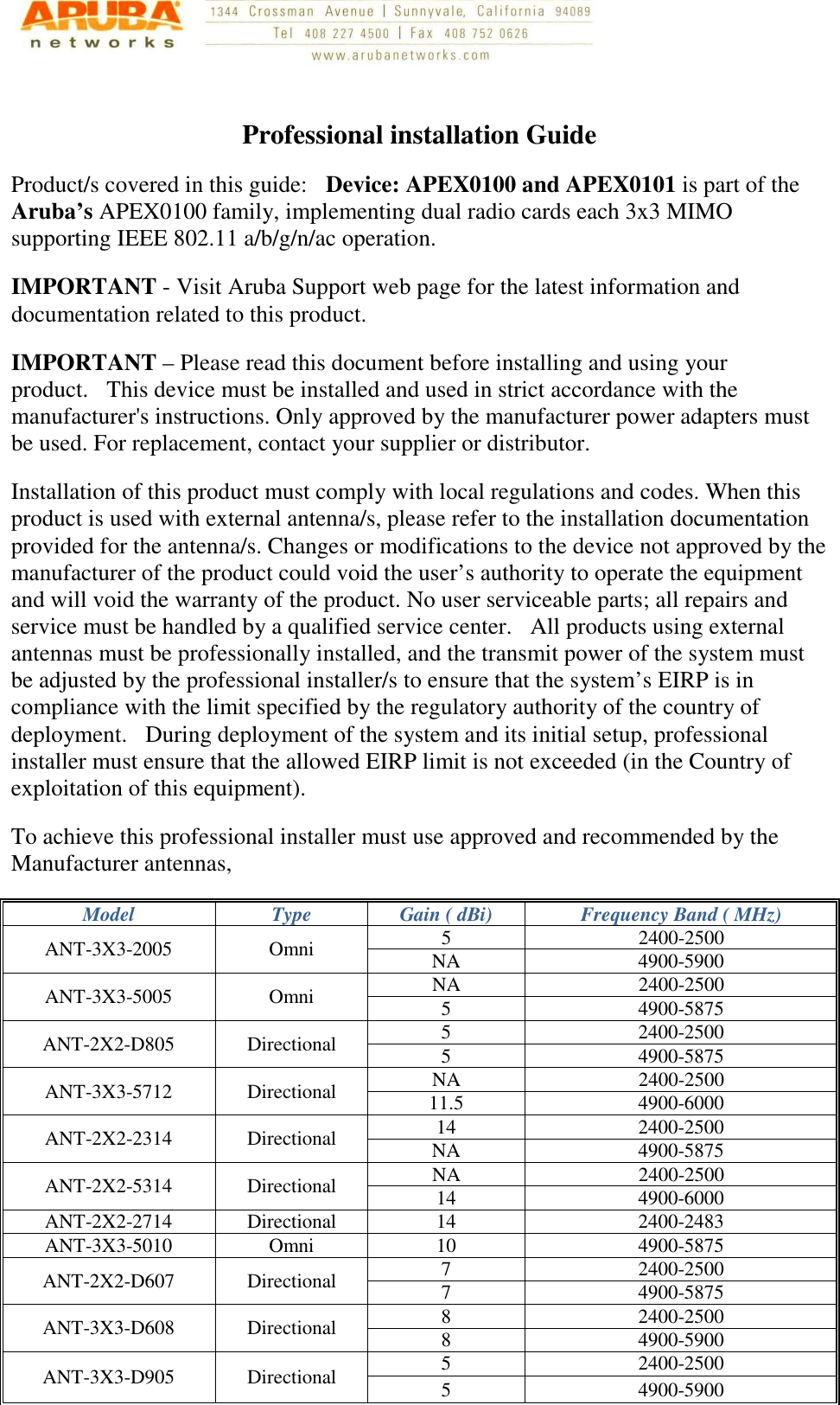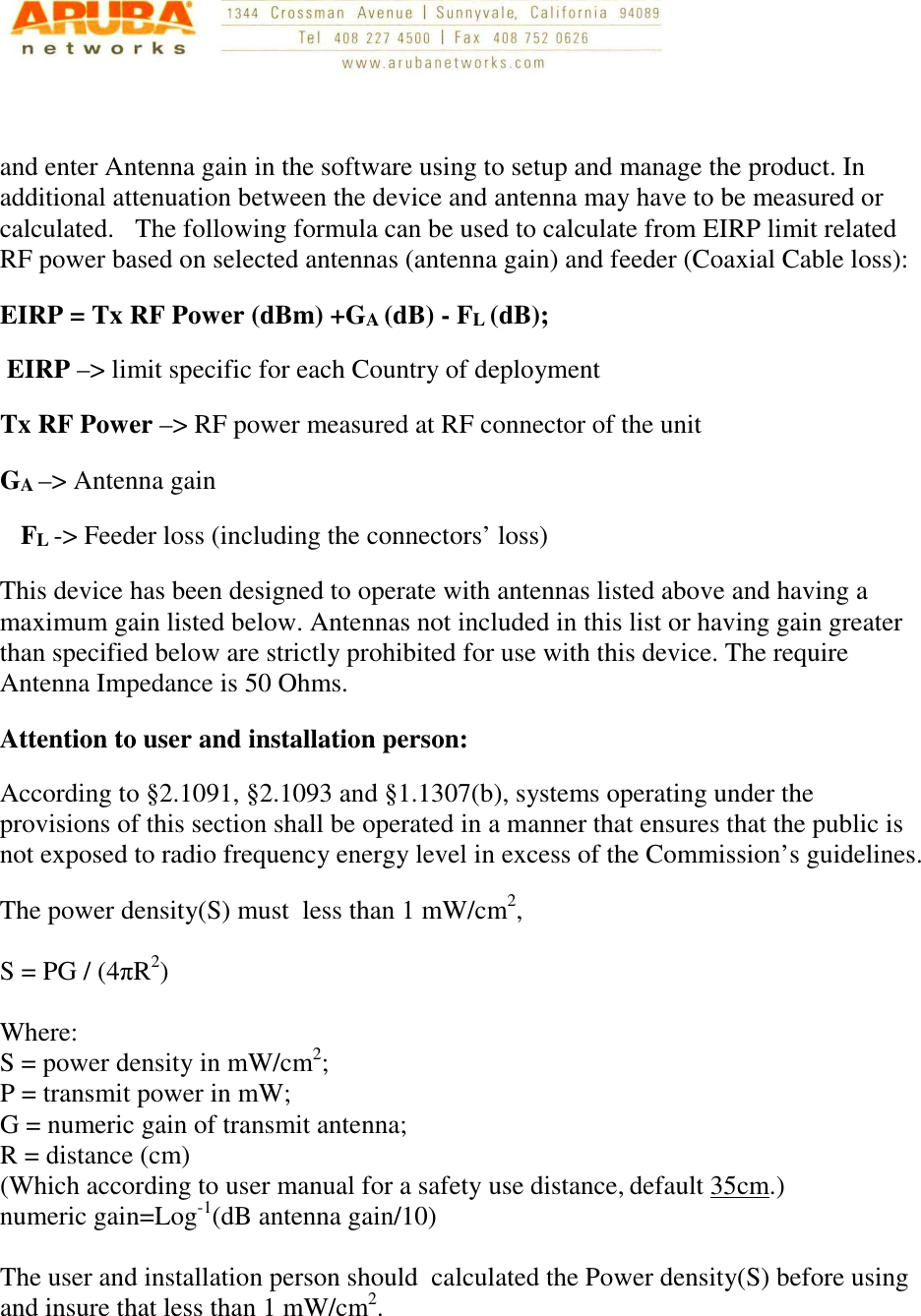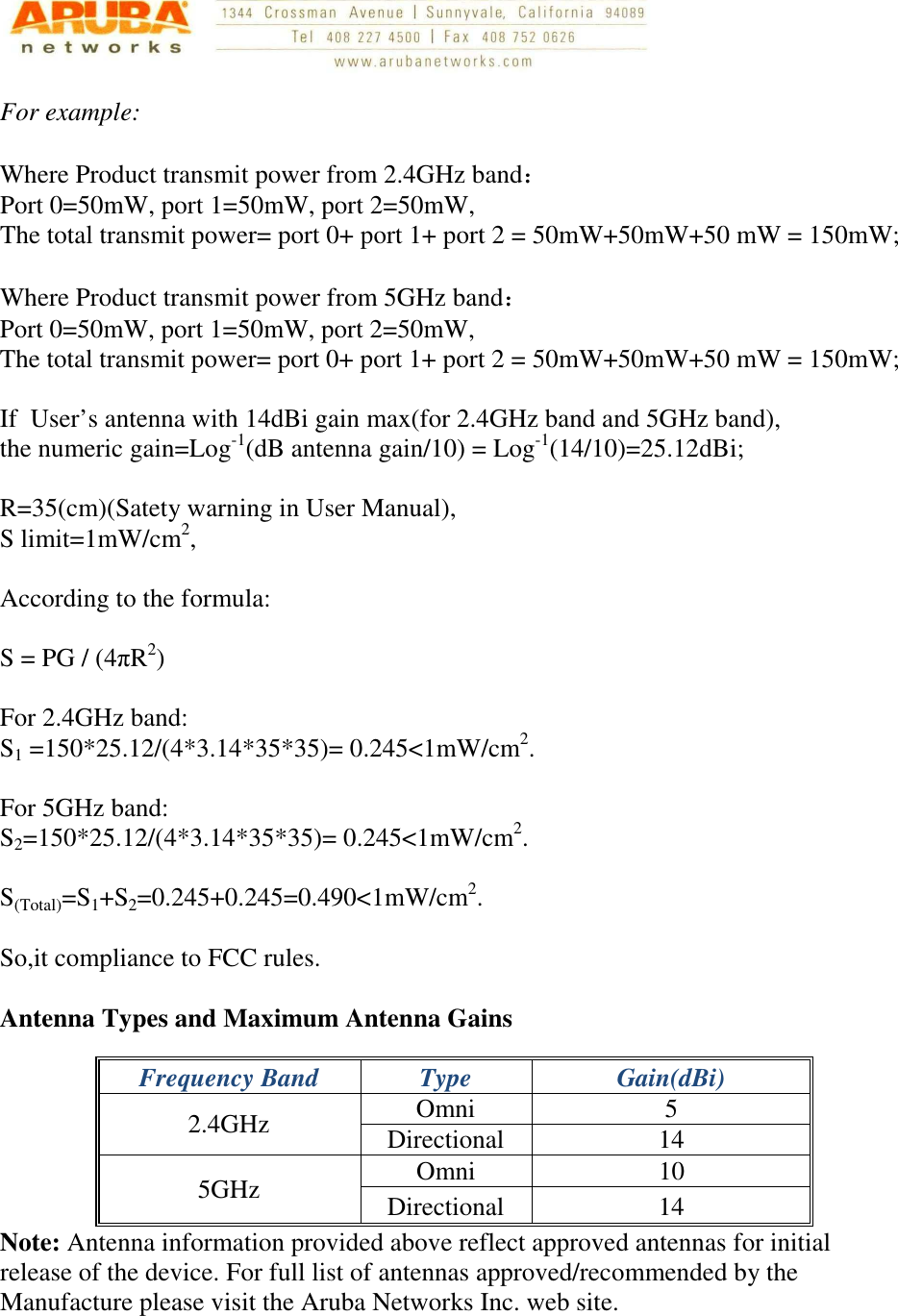Hewlett Packard Enterprise APEX0100101 Access Point User Manual Professional installation Guide v2
Aruba Networks, Inc. Access Point Professional installation Guide v2
Contents
- 1. Professional installation Guide v2
- 2. Q9DAPEX0100101_User Manual v2
- 3. Installation Guide
Professional installation Guide v2


